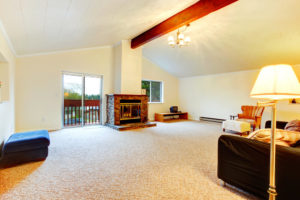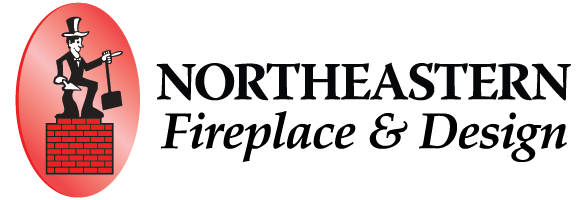If you own a fireplace, you know that it takes a lot of skill and hard work to operate it. There are many things that can affect how well your fireplace operates and it often takes a chimney or  ventilation specialist to determine what steps need to be taken to make sure that your fireplace is working at its full potential. If you have two fireplaces in your home on separate stories sharing a single chimney, it can create even more potential for fireplace issues. At Northeastern Fireplace and Design, we know that it can be difficult trying to maintain a duel fireplace system and we want to help out by offering a few pointers to help you make sure both of your fireplaces are running efficiently and smoothly for you all winter.
ventilation specialist to determine what steps need to be taken to make sure that your fireplace is working at its full potential. If you have two fireplaces in your home on separate stories sharing a single chimney, it can create even more potential for fireplace issues. At Northeastern Fireplace and Design, we know that it can be difficult trying to maintain a duel fireplace system and we want to help out by offering a few pointers to help you make sure both of your fireplaces are running efficiently and smoothly for you all winter.
Upstairs Fireplaces
Oftentimes in older homes, you will find a fireplace on multiple stories of the home. This makes sense because homes that previously used fireplaces as their primary heating source would naturally need more fireplaces. In most cases these fireplaces share one chimney, but use their own separate flue to exhaust smoke and byproducts. This type of setup is totally normal and nothing to be alarmed about, however, there are some unique issues that can arise for homeowners with fireplaces on two floors.
Common Issues
There are two common issues that naturally arise when you have an upstairs fireplace. One issue is that when you build a fire in your lower story fireplace, you get smoke coming out of your upper story fireplace. This makes sense to a lot of homeowners since smoke naturally rises and homeowners naturally assume that there is a leak in both of their flues causing the smoke. What doesn’t make sense to homeowners is when they start a fire in their upper story fireplace and smoke starts coming out of their lower story fireplace. This is the second common issue that homeowners face when they own a home with fireplaces on two floors. Although it seems unnatural, there is an easy explanation as to why this happens.
Why does this happen?
The unique thing about both these issues is that it was actually more common now than it was when your home was originally built. That’s because this issue is related to the airflow in and out of your home. Most older homes have been upgraded to be more energy efficient. This is a good thing, but it does have some side effects. When a home’s doors and windows are sealed up well, the air pressure outside becomes higher than inside your home, essentially turning your home into a negative air pressure vacuum. When this happens, air from outside will be pushed into your home anyway it can get in. Your chimney makes a perfect entry point for outdoor air and if your damper doesn’t seal well, cold, and sometimes smelly, air will be drawn into your home.
The issue is a little different with a home that has fireplaces on two different stories, but it follows a lot of the same concepts. When you start a fire in your fireplace, hot air raises the air pressure inside your fireplace and chimney. This means it draws air from your home and pushes it out of the chimney. This is how a normal fireplace is supposed to work. Because hot air is being pushed out of your home, naturally air will try to find a place to be drawn into your home to equalize the pressure in your home. If you only have one fireplace, air will try to seep into your home through little cracks in your woodwork and window and door seals. However, if you have a second flue in your chimney, it can be the perfect entrance into your home for air to flow into. And since your fireplace flues are generally located in the same location, smoke that is exiting one flue will be drawn into the other flue and into your home. This can be a big problem since one of the byproducts of burning wood is carbon monoxide. Carbon monoxide is a toxic gas that can lead to a number of different health problems and could even end up in death.
How do I fix this issue?
There are a couple of ways to fix this issue. The reason that homes never had this issue in the past is that they weren’t nearly as airtight. This means they didn’t create the vacuum that is created in most modern homes. You can relieve the negative air pressure in your home by cracking a window or an outside door and the issue should go away. Another solution would be to install a top mount damper on top of your flues. A top mount damper will seal the top of your flue, preventing smoke from coming into your home.
At Northeastern Fireplace and Design, our Chimney Safety Institute of America (CSIA) certified chimney technicians can help you determine the best way to remediate issues with airflow in your home. If you have any questions about owning two fireplaces, or would like to schedule an at-home appointment, call the fireplace and chimney experts at Northeastern Fireplace and Design today at (518) 767-9314 or contact us online with your questions. We look forward to serving you.
